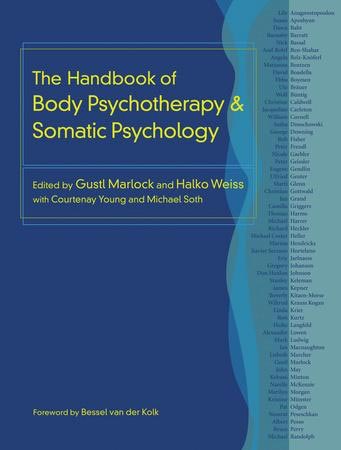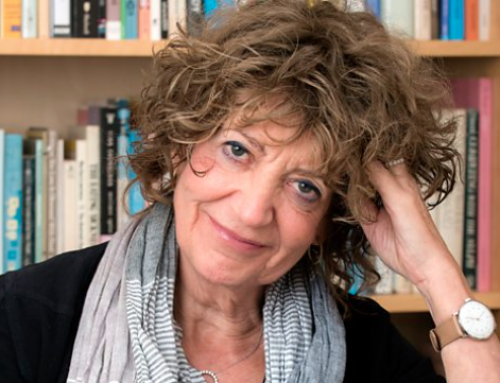Edited by Gustl Marlock and Halko Weiss with Courtenay Young and Michael Soth
This global Handbook of Body Psychotherapy has been many years in the making, and is now due to be published in December 2015. You can get a 30% discount ($69.99 rather than $99.99) by ordering that book directly from North Atlantic Books.
I spent a good chunk of my available time last year helping to edit this magnum opus, which is the updated English version of a book that was published in Germany in 2007. It was a grand and magnificent undertaking, by the original editors Gustl Marlock and Halko Weiss, to bring together the very diverse and disparate global community of body-oriented psychotherapists in one big compendium (I wrote a review of that German edition in 2007).
With the body having gained so much recognition over recent years (considering how ignored and neglected an aspect of the therapeutic relationship it had a previously been), this publication is timely. Half of it was originally written in German, and had to be translated now for the English version. Some of the old chapters were dropped, and some new ones inserted, including two that I contributed (these were actually written years ago - that tells you how long work has been going on to get this published):
- Transference, Countertransference, and Supervision in the Body Psychotherapeutic Tradition
- The Use of Body Psychotherapy in the Context of Group Therapy
Here are some juicy snippets and extracts from the ...
FOREWORD by Bessel van der Kolk
Our relationship to our own body determines how we make our way in the world.
Our physical sensations and body movements are the foundations of our sense of who we are.
We have little say over whether our organisms will perceive a particular sensory stimulus as safe, dangerous, or exciting.
We have little conscious control over whether, in response to those stimuli, our bodies freeze, tense up, space out, or mobilize for a fight.
One of the fundamental tasks of our brains is to create a map of the world in order to guide us in how to go about finding food, mates, shelters, and companionship. This map is constructed entirely on the basis of prior experience. Routinely following these internal road maps allows us to deal with any new situations in old remembered ways. Experience, particularly in the first few years of life, profoundly shapes what this map looks like, including our relationship to ourselves. Feeling loved and secure leaves us with a harmonious relationship toward our body, its needs, and its capacities—free to explore the world. In contrast, encounters with abuse, neglect, and domination render us physically powerless, frozen, constricted, immobilized, or activated and offensive—trauma and disrupted attachment patterns cause people to lose their way in the world.
Unless we physically come to grips with the remnants of fear and defensiveness lodged in our physical reality, the imprints of the past may permanently alter whether we feel at home in our bodies and may interfere with our openness to engage in new experiences, and learn from them.
The exploding interest in working with these bodily states has occurred simultaneously with three major scientific developments that support how fundamental bodily function is for effective operation of the human organism:
(1) trauma research; (2) neurosciences (that made it possible to visualize and track what happens in the brain when people feel, think, and sense); (3) attachment research
Although talking and figuring out why one feels bad can be a helpful first step to understand what is going on, it is unlikely to change fundamentally how one physically experiences oneself.
Our minds are much like talk shows on television, trying to explain the day’s events after the sun is down.
Insight and understanding frequently build only strong upper lips.
The rational brain is geared to the outside world, and not inward. The only pathway in the brain from the conscious self to the emotional brain, i.e. the only way that people can effectively influence how they feel, runs from areas in the conscious mind that convey the sense of being in touch with oneself and one’s bodily states (the medial prefrontal cortex and insula) to the emotional centers of the brain (centering on the amygdala), then to the arousal centers, and finally to the hormonal and muscular output centers. This means that working with deep sensations and feelings has the potential of attaining a sense of internal equilibrium and balance. This appears to be the only pathway toward gaining a sense of being the master of one’s own psyche—of being in charge of one’s life.
Most “psychological” problems are rooted within our relationship to ourselves, to our internal sensations that have become blunted, exaggerated, or “stuck.”
Hence, the process of psychological change is fundamentally concerned with regaining a healthy relationship to our internal feeling states.
However, without being able to relate to one’s body as the container of one’s self-experience, true integration, empowerment, and thus healing is not possible.
After regaining a physical sense of one’s self and befriending one’s inner experience, some people may choose to tell the story of what got them in trouble, while others decide to just go on with their lives. Body Psychotherapy helps with both these processes. I can therefore strongly recommend this handbook.



Leave A Comment
You must be logged in to post a comment.